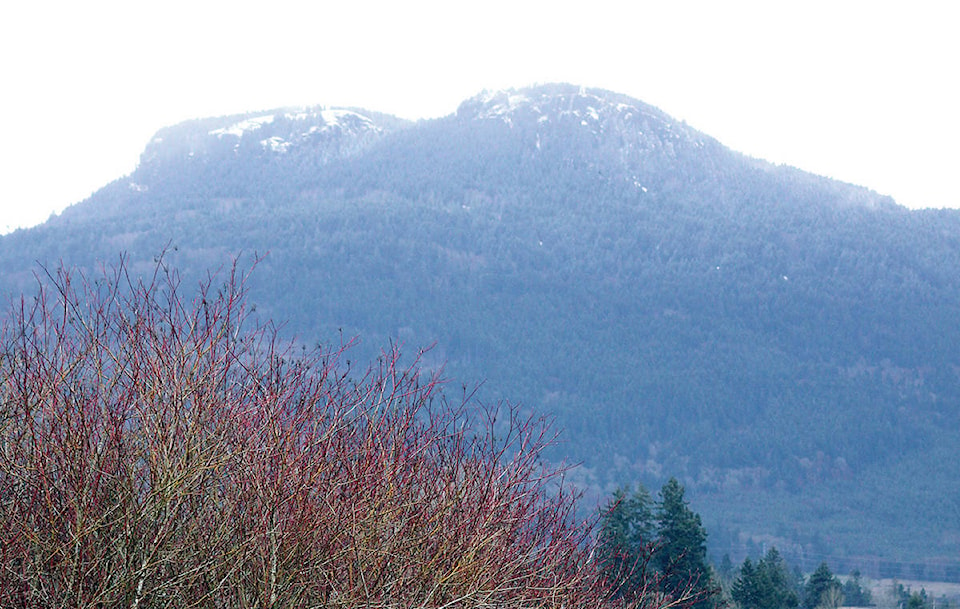For today, a reminder of just how pervasive is the British presence on local maps and why this is so.
For months now, public criticism of our history as it has been recorded, and those who moulded the Canada in which we live, has gained in frequency and fervour.
So fast and furious have been the protests against the way we’ve long viewed and taught about our past and some of our best known pioneers and political leaders, that I’ve had to really ponder how to add my two-bits worth to the boil.
For today, I’m going to begin gently by enumerating some of the geographical features of the Cowichan Valley that bear the names of members of the British establishment and military. Why? Because they’re among the key targets of those who now accept, or so it seems to me, that to have been white and of European descent is a sin, one for which all should be tarred as having been imperialists beyond redemption.
For the most part, I strongly disagree with this view but I want to leave that argument for another time. For today, a reminder of just how pervasive is the British presence on local maps and why this is so. It was the British presence, first in the form of the Hudson’s Bay Co., then as the Royal Navy and colonial then provincial governments, that laid the groundwork for the British Columbia which we’ve had the good fortune to inherit. As our very name would suggest.
Aside from the issue of First Nations geographical names having been, for the most part, usurped by European mapmakers, something with which I do disagree in many cases, many features honour officers, civic leaders and pioneers who, I would argue, earned this homage through their efforts and devotion to duty.
But enough preamble, let’s look at Valley maps. Here are those which immediately come to mind: Baden-Powell Road is Shawnigan Lake’s tribute to the founder of the Boy Scouts and the Girl Guides, Robert Stephenson Smyth Baden-Powell of Gilwell, first baron, 1857-1941. Today he’s less known as a soldier despite his having seen much active service in India and Africa prior to the Boer War in which he defended Mafeking for seven months and subsequently organized the South African Constabulary. He received a peerage in 1929 for his work in organizing the Scouts and Guides.
Cavell Street is Cowichan’s abbreviated tribute (it’s just a block long) to the courageous British nurse Edith Cavell who was executed by the Germans for helping British soldiers escape from behind enemy lines during the First World War. Mount Edith Cavell on the B.C.-Alberta border does a better job of commemorating her quiet heroism, fortunately.
Although Lake Cowichan’s Gordon Road honours businessman Stanley Gordon, the Gordon River recalls Cmdr. (later Rear Admiral) George Thomas Gordon, RN, master of the six-gun sloop HMS Cormorant, first naval steam vessel on this coast, 1846-50.
Cowichan Bay’s Hecate Park (a name currently undergoing review because of its direct link with the colonialism that’s now so controversial) takes its cue from the British warship that landed the first settlers in the Cowichan Valley in August 1862.
Mainguy Island in the Chemainus River Estuary recalls the pioneer Daniel Wishart Mainguy family that gave Canada three admirals, including Rollo, ‘Father of the modern Royal Canadian Navy.’
Mount Prevost and several other B.C. features owe their provenance to Admiral James Charles Prevost, RN. He played a prominent role in establishing law and order in the Fraser River gold fields and in later negotiations that led to the establishment of the marine boundary between B.C. and Washington.
Speaking of admirals, we also have Mount Richards which, contrary to local lore, is named for Admiral Sir George Henry Richards, KCB, FRGS. This noted marine surveyor, hydrographer and Arctic navigator probably named more features on B.C. marine charts than any other single man in his years on this coast. He was incredibly modest, too, foregoing the opportunities to immortalise himself on our maps. The fact that we have Mount Richards and Port Hardy area has its Richards Channel, both as humble as the officer for whom they’re named, is the work of succeeding hydrographers.
Osborn Bay (no ‘e!’) commemorates Capt. Sherard Osborn, RN, CB, sailor and author who spent much of his naval career in the East India Station. Promoted to commander in 1852, he participated in two searches for Sir John Franklin’s lost Arctic expedition, was knighted for his services in the Crimean War and saw further action in Chinese waters as commander of a gunboat squadron. Made Rear Admiral in 1873, he wrote several books and pamphlets about his naval service in Asian and Arctic seas before his sudden death, aged 53. Capt. George Richards, RN, named Crofton’s bay after him in 1859.
Rice Road recalls the Maj.-Gen. Harry Chippendale Plunkett Rice family. Commissioned in the field at the age of 16, this veteran of the Indian Mutiny retired to Maple Bay after being invalided from the British Army. He also was a classical scholar, mathematician, linguist (six languages) and an amateur botanist. Valley life agreed with him as he lived into his 80s.
Col. Reginald Eckford Roome gives us Roome Road. For many years commodore of the Maple Bay Yacht Club, he’d served as a cavalry officer in northern Indian (Pakistan) and was badly gassed during the First World War.
Our Sansum Narrows and Sansum Island in Haida Gwaii recall Lt. Arthur Sansum, RN, first officer of HMS Thetis, on this station 1851-53. He never made it home, dying of apoplexy while his ship was still in California waters.
Do any of these men (yes, sorry folks, all men) sound unworthy of commemoration? Does any one of them come across as an imperialist as we now define the word?
